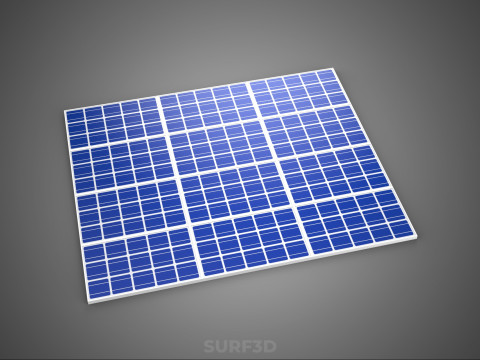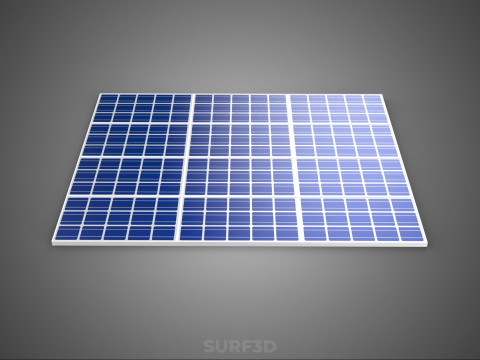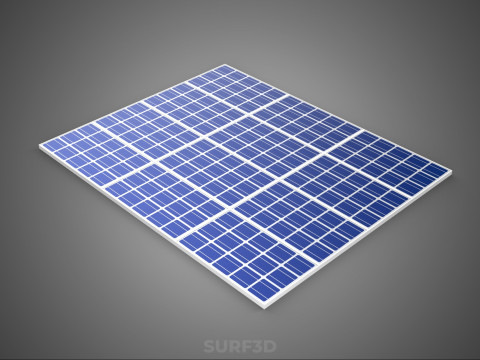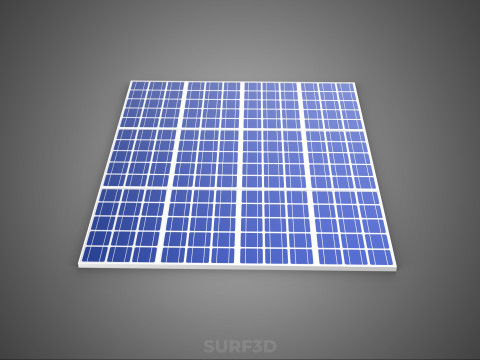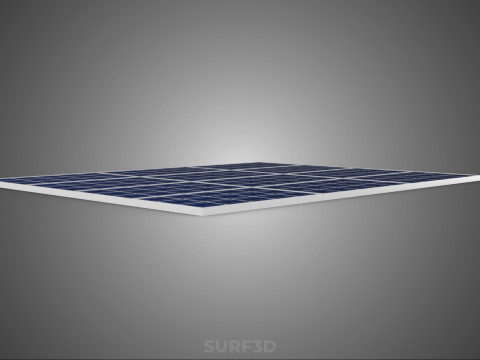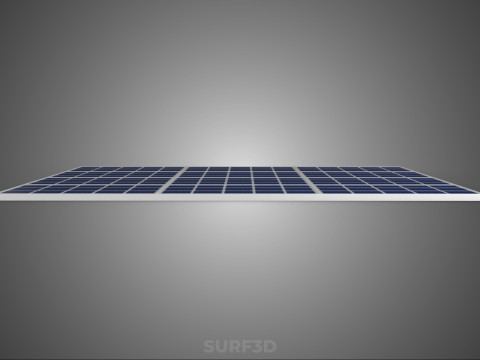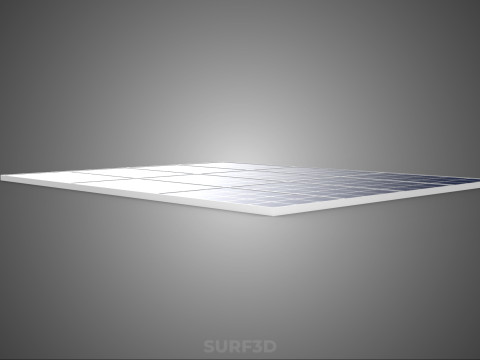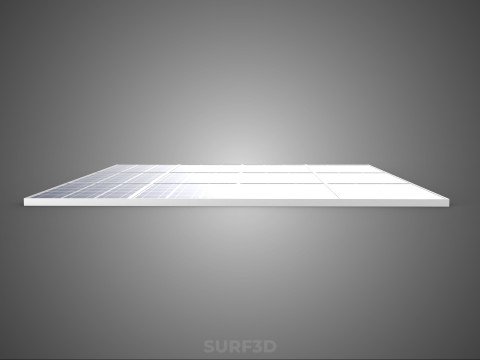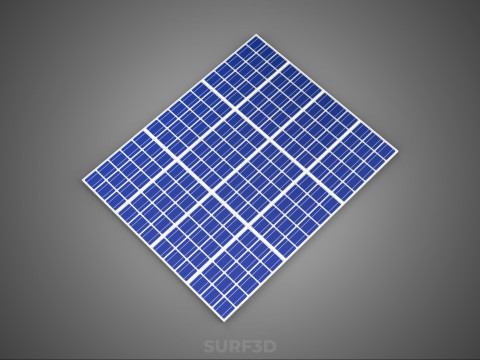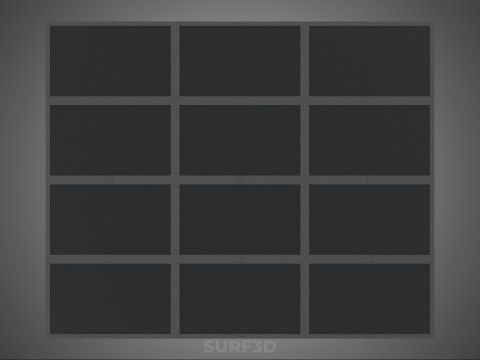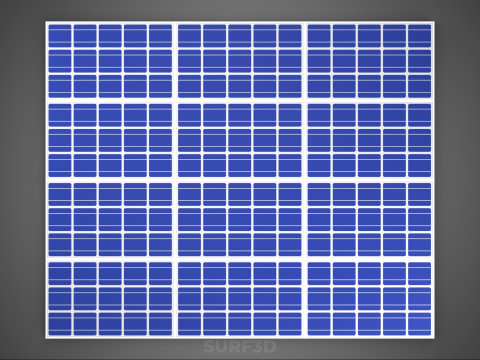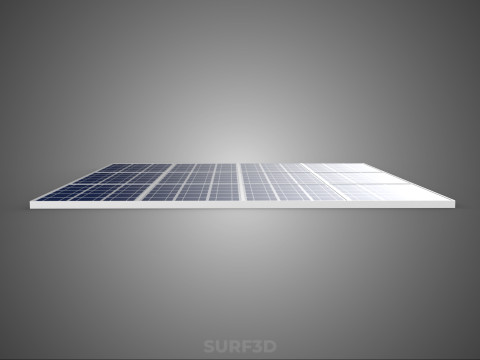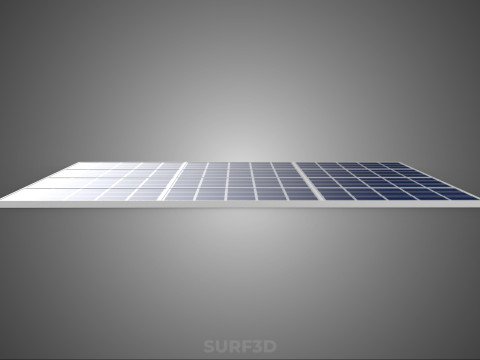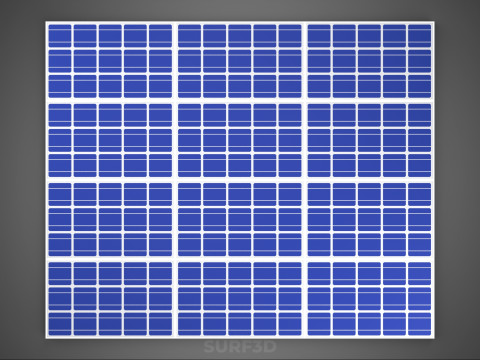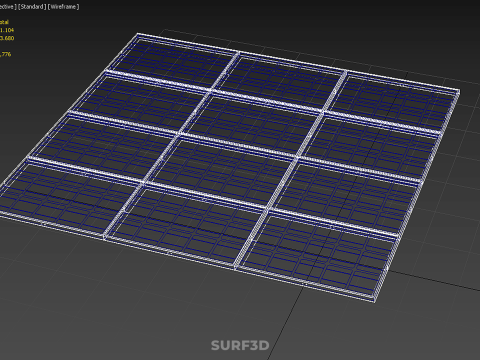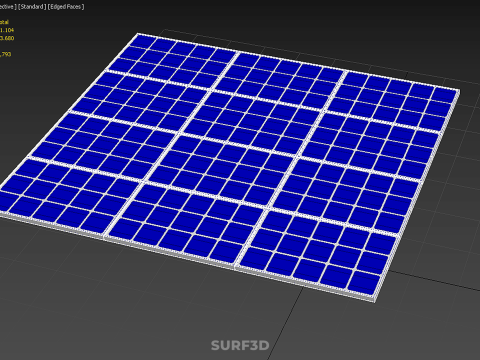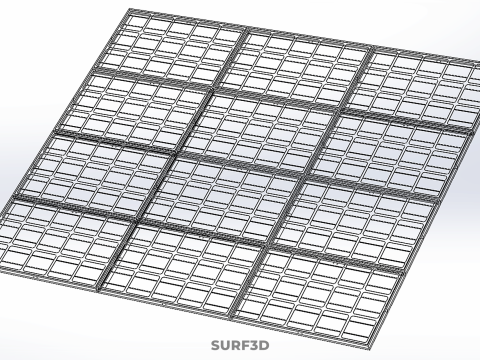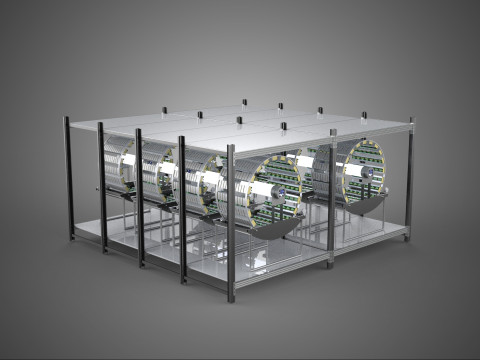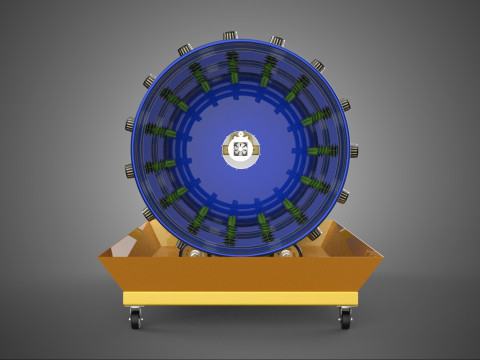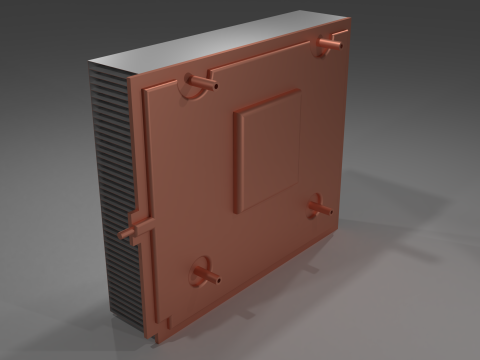어레이 태양광 패널 모듈 셀 태양광 재생 가능 태양 에너지 3D 모델
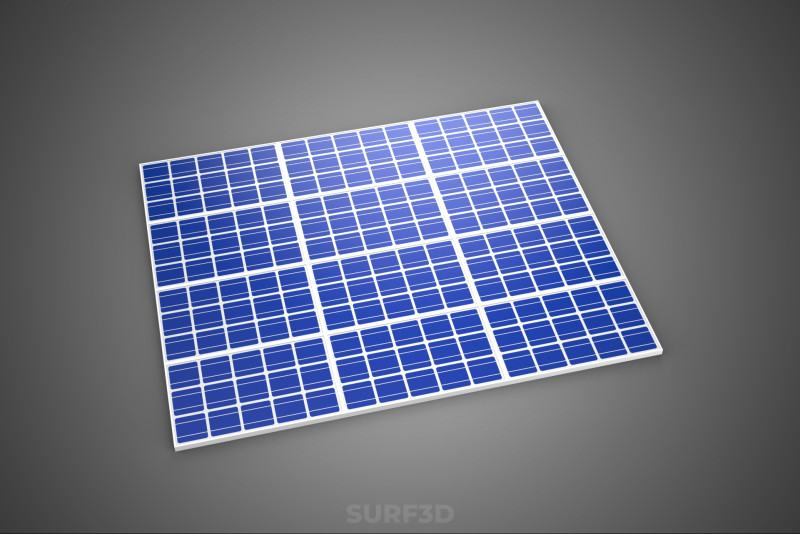
- 작성자에게 제품 지원 요청
- 이용 가능한 포맷:
- 아이템 ID:595421
- 날짜: 2025-08-28
- 폴리곤:31104
- 버텍스:43680
- 애니메이티드:No
- 텍스쳐드:No
- 리그드:No
- 재료:
- 로우 폴리곤:No
- 컬렉션:No
- UVW 매핑:No
- 플러그인 사용 됨:No
- 프린트 준비:No
- 3D 스캔:No
- 성인용 콘텐츠:No
- PBR:No
- AI 훈련:No
- 지오메트리:Poly NURBS
- 언래핑 된 UVs:Unknown
- 조회:243
설명
High-quality 3D assets at affordable prices — trusted by designers, engineers, and creators worldwide. Made with care to be versatile, accessible, and ready for your pipeline.
Included File Formats
This model is provided in 14 widely supported formats, ensuring maximum compatibility:
• - FBX (.fbx) – Standard format for most 3D software and pipelines
• - OBJ + MTL (.obj, .mtl) – Wavefront format, widely used and compatible
• - STL (.stl) – Exported mesh geometry; may be suitable for 3D printing with adjustments
• - STEP (.step, .stp) – CAD format using NURBS surfaces
• - IGES (.iges, .igs) – Common format for CAD/CAM and engineering workflows (NURBS)
• - SAT (.sat) – ACIS solid model format (NURBS)
• - DAE (.dae) – Collada format for 3D applications and animations
• - glTF (.glb) – Modern, lightweight format for web, AR, and real-time engines
• - 3DS (.3ds) – Legacy format with broad software support
• - 3ds Max (.max) – Provided for 3ds Max users
• - Blender (.blend) – Provided for Blender users
• - SketchUp (.skp) – Compatible with all SketchUp versions
• - AutoCAD (.dwg) – Suitable for technical and architectural workflows
• - Rhino (.3dm) – Provided for Rhino users
Model Info
• - All files are checked and tested for integrity and correct content
• - Geometry uses real-world scale; model resolution varies depending on the product (high or low poly)
• • - Scene setup and mesh structure may vary depending on model complexity
• - Rendered using Luxion KeyShot
• - Affordable price with professional detailing
Buy with confidence. Quality and compatibility guaranteed.
If you have any questions about the file formats, feel free to send us a message — we're happy to assist you!
Sincerely,
SURF3D
Trusted source for professional and affordable 3D models.
More Information About 3D Model :
A photovoltaic (PV) system harnesses radiant energy from the Sun, a renewable energy source, to generate electricity through a process known as the photovoltaic effect. This sophisticated technology is composed of hierarchical structures, beginning with the fundamental **photovoltaic cell**, assembling into **modules** (commonly known as solar panels), and ultimately forming **arrays** that constitute complete power-generating units.
At its core, a **photovoltaic cell** is a semiconductor device, typically fabricated from silicon (either monocrystalline, polycrystalline, or amorphous) or thin-film materials (e.g., cadmium telluride, copper indium gallium selenide, perovskites). The cell's function is predicated on the **photovoltaic effect**, where incident photons from **Sun energy** (solar radiation) are absorbed by the semiconductor material. This absorption excites electrons, generating electron-hole pairs. Within the cell, an intrinsic electric field, typically formed by a p-n junction, separates these charge carriers. Electrons are directed to one terminal, and holes to the other, creating a potential difference. When an external circuit is connected, these separated charges flow as direct current (DC) **energy**. The efficiency of a cell is defined by the ratio of electrical power produced to the solar power incident upon its surface.
Individual **photovoltaic cells** produce a relatively small amount of **energy** (e.g., 0.5-0.6 volts). To achieve practical voltage and current levels for various applications, multiple cells are electrically interconnected, usually in series, and then encapsulated to form a **photovoltaic module**, more commonly referred to as a **solar panel**. A module serves to protect the delicate cells from environmental degradation (moisture, dust, physical impact) through layers of encapsulants (e.g., ethylene vinyl acetate or EVA), a transparent front sheet (typically tempered glass), and a durable backsheet. An aluminum frame often surrounds the perimeter for structural integrity and ease of mounting. A junction box on the module's rear houses electrical connections and bypass diodes, which prevent power loss and hot spots when parts of the module are shaded. The power output of a module is rated in Watt-peak (Wp) under standard test conditions.
For applications requiring higher power output, multiple **photovoltaic modules** are interconnected electrically, both in series (to increase voltage) and in parallel (to increase current), to form a **photovoltaic array**. A solar **array** can range in size from small residential rooftop installations to vast utility-scale **solar energy** farms spanning hectares. The physical structure supporting the modules in an array can be fixed-tilt, seasonally adjustable, or equipped with tracking systems (single-axis or dual-axis) that follow the Sun's path across the sky to maximize **energy** capture. Beyond the modules, a complete PV system includes "balance of system" (BOS) components such as inverters (to convert DC electricity into alternating current, AC, for grid compatibility or home use), wiring, mounting hardware, and monitoring equipment.
The entire system represents a key technology within the **renewable energy** sector. Unlike fossil fuels, solar **energy** is inexhaustible on a human timescale, produces no greenhouse gas emissions or air pollutants during operation, and contributes to energy independence and sustainability. The increasing adoption of **solar photovoltaic** technology is a pivotal element in global efforts to mitigate climate change and transition towards a cleaner, more sustainable **energy** future, directly converting the radiant power of the Sun into usable electricity.
KEYWORDS: Photovoltaic, Solar Energy, Renewable Energy, Solar Cell, Solar Module, Solar Panel, Solar Array, Photovoltaic Effect, Semiconductor, Silicon, Thin-Film, Electron-Hole Pair, Direct Current, Electricity Generation, Energy Conversion, Grid-****, Off-Grid, Inverter, Greenhouse Gas Reduction, Sustainability, Photons, Irradiance, P-N Junction, Encapsulation, Watt-Peak, Solar Radiation, Balance of System, Energy Independence, Clean Energy.
다른 포맷이 필요하세요?
다른 포맷이 필요하시면, 새로운 지원 티켓을 열어 요청하세요. 저희는 3D 모델을 다음으로 변환할 수 있습니다: .stl, .c4d, .obj, .fbx, .ma/.mb, .3ds, .3dm, .dxf/.dwg, .max. .blend, .skp, .glb. 자유 형식 변환우리는 3D 장면을 변환하지 않습니다 .step, .iges, .stp, .sldprt와 같은 형식도 포함됩니다.!
사용 정보
어레이 태양광 패널 모듈 셀 태양광 재생 가능 태양 에너지 - 기본 또는 확장 라이선스에 따라 이 로열티 프리 3D 모델을 개인적 및 상업적 목적으로 사용할 수 있습니다.기본 라이선스는 디지털 광고, 디자인 및 시각화 프로젝트, 비즈니스 소셜 미디어 계정, 네이티브 앱, 웹 앱, 비디오 게임, 그리고 물리적 또는 디지털 최종 제품(무료 및 유료 모두)을 포함한 대부분의 표준 사용 사례를 포괄합니다.
확장 라이선스는 기본 라이선스에 따라 부여된 모든 권리를 포함하며 사용 제한이 없으며, 로열티 프리 조건 하에 3D 모델을 상업적 프로젝트에 무제한으로 사용할 수 있습니다.
더 보기


 English
English Español
Español Deutsch
Deutsch 日本語
日本語 Polska
Polska Français
Français 中國
中國 한국의
한국의 Українська
Українська Italiano
Italiano Nederlands
Nederlands Türkçe
Türkçe Português
Português Bahasa Indonesia
Bahasa Indonesia Русский
Русский हिंदी
हिंदी